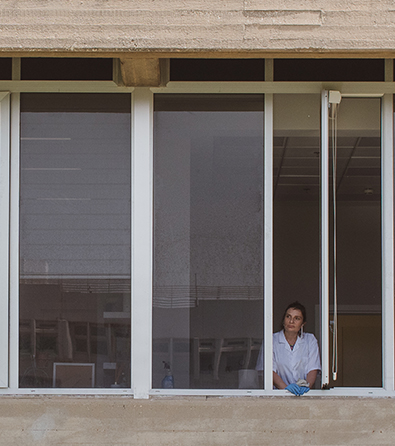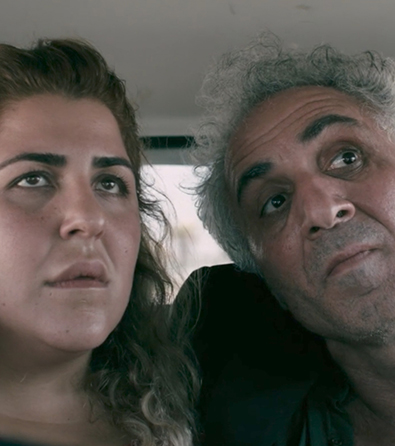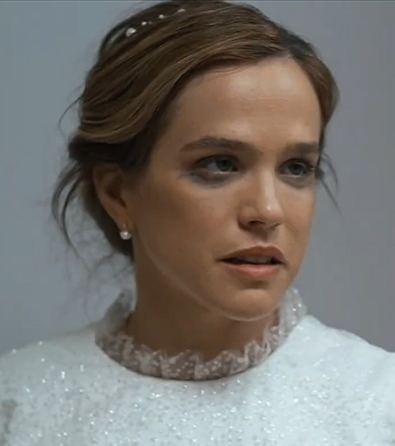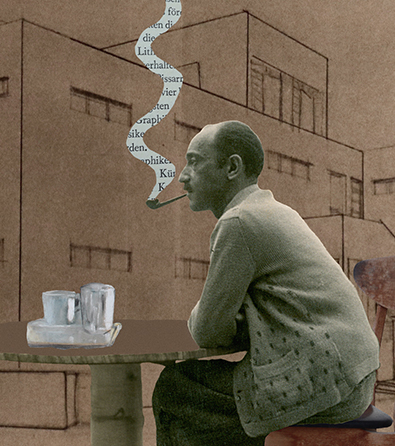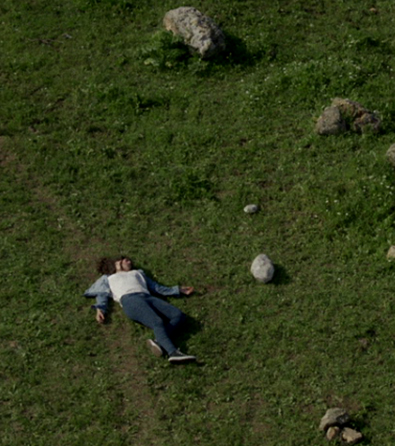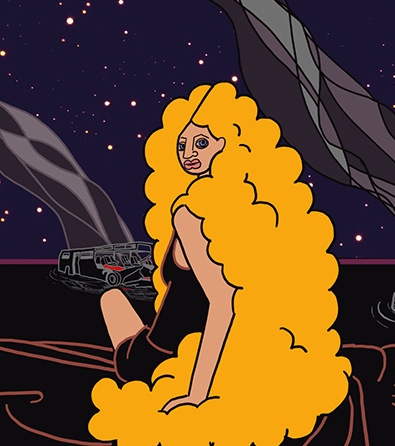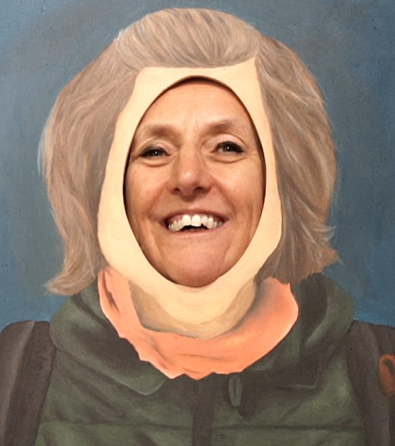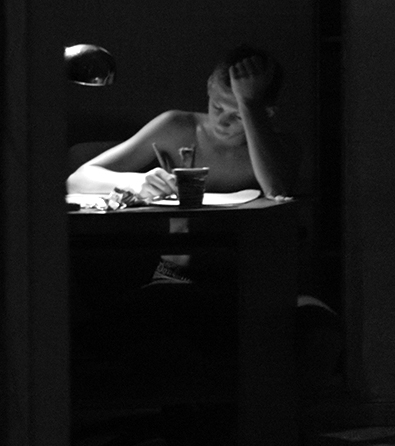Watch the short documentary film Marry Fuck Kill (14 minutes) at the top of the page.
* To watch this film, please approve YouTube/Vimeo cookies via the blue cookie icon at the bottom left of the screen.
Marry Fuck Kill, directed by video artist Ruth Patir, is a 3D documentary film exploring fertility and female sexuality. Patir has been selected to represent Israel at the Venice Biennale in 2024, making this an opportune moment to spotlight this film, which embodies the essence of her artistic portfolio. In Marry Fuck Kill, Patir engages her mother in a dialogue about sexuality, motherhood, and women’s liberation. This conversation is uniquely facilitated through statues of fertility goddesses from the Kingdom of Judah era, discovered in archaeological digs and now showcased in the Israel Museum.
The female statues featured in the film are more than static museum displays; Patir infuses them with vitality. Through advanced technology, these sculptures are animated to move, dance, and even transition to settings beyond the museum’s confines. This animation is achieved using motion capture technology, which records and transfers movement to inanimate objects. The process involves wearing a specialized suit equipped with sensors that detect the user’s movements. This data is then processed in a sophisticated production phase. As a result, while the audience hears the voice of Patir’s mother, it appears to emanate from a 3D sculpture. By animating this statue and endowing it with the voice and movements of a living woman, Patir offers a fresh perspective on ancient fertility goddesses, prompting reflections on the parallels and distinctions between women and deities.
In ancient cultures, including those of Egypt, Greece, Canaan, and Rome, representations of fertility and sexuality goddesses were often employed by local authorities and patriarchal systems to reinforce traditional female roles. These depictions predominantly highlighted women’s roles in fertility, domesticity, and child-rearing. Historically, a woman’s fertility played a pivotal role in defining her status. It ranged from being perceived as a mere vessel for male pleasure to being revered as a nurturing and omnipotent mother figure. Within these ancient societies, fertility was often viewed as a boundless and magical capability, not only to mend imperfections but also to exert influence over the male physique and, by extension, the world at large.
In reference to the statues of goddesses from the Kingdom of Judah era, the film highlights the patriarchal narrative surrounding the goddess Asherah. Asherah’s depiction in local mythology portrays her as relinquishing her temples to prioritize those of male deities. Within this male-dominated context, Asherah was commended for her self-sacrifice, allowing male gods to overshadow her and become the primary focus of veneration. Some legends even suggest that Yahweh, believed to be her spouse, personally decreed the destruction of her temples, effectively erasing any remnants of her image and legacy from collective memory.
Indeed, historical records predominantly recall Asherah’s influence as a fertility goddess, with her legacy particularly revered by women. Within the lore of the Kingdom of Judah, it’s posited that only female deities truly honored and recognized Asherah’s contributions, in contrast to their male counterparts. In a poignant scene from the film, Patir depicts these goddesses of the Kingdom of Judah dancing harmoniously in a desert setting, celebrating their femininity as if partaking in an outdoor party. This evocative tableau includes the statue of the fertility goddess, which serves as the conduit for Patir’s mother’s voice in the narrative.
Utilizing an ancient artifact as a medium for a cross-generational dialogue on sexuality introduces a spectrum of themes, often contrasting in their nature: openness versus secrecy, historical versus contemporary, oblivion versus perpetuity, inertia versus dynamism, and the maternal versus filial relationship. The setting of the interview, situated in the mother’s living room, provides a stark contrast. The mundane backdrop of a typical household sharply contrasts with the mother’s embodiment of a fertility goddess. This setting amplifies the film’s ironic undertone as Patir converses with her mother about the evolving roles and perceptions of women across ages.
The title of the film, Marry Fuck Kill, is inspired by a popular social game where participants, often women, are posed with hypothetical choices about which public figures they’d prefer to marry, have sex with, or kill. During their conversation, the mother touches upon various topics, from her views on Presidents Obama and Clinton to discussions on archaeology. She delves into her professional contributions as a chemist and her involvement in standardizing condoms when they were first introduced to Israel—a period when contraceptive pills were the predominant method of birth control. She describes the introduction of condoms as both a national initiative and a technological experiment. Reflecting on her era, she mentions that women’s professional worth was often gauged by their productivity, drawing parallels between workplace output and reproductive fertility. She candidly expresses the challenges of being objectified based on sexuality, emphasizing that women of her generation aspired to be recognized for their capabilities beyond just their sexual attributes.
Patir approaches themes of motherhood, femininity, fertility, and childbirth with an objective lens, free from overt sentimentality and not constrained by temporal boundaries. Instead, by intertwining archaeology with modern technology, she broadens the deeply personal dialogue between mother and daughter, extending it beyond the confines of familial and domestic spheres. This fusion prompts contemplation on the recording, safeguarding, and timeless nature of the female narrative.
Patir concludes her film with a melancholic rendition of the song “There are Worse Things I Could Do” from the 1978 movie “Grease,” directed by Randall Kleiser, which she personally vocalizes. Within “Grease,” actress Stockard Channing, portraying Betty Rizzo, conveys the predicament of a woman whose every innocent interaction with men is misconstrued as promiscuous and improper. Meanwhile, these men face no repercussions for their own actions, freely objectifying women without consequence. Rizzo mourns the loss of her idealized protector, the proverbial knight in shining armor, and grapples with the harsh reality of navigating a world dominated by disrespectful and aggressive men. She yearns for genuine emancipation, not just for herself but for all women.
Patir’s cinematic creation transcends traditional boundaries, blending various genres. Through her adept use of the film medium, she powerfully communicates this aspiration for liberation, both in narrative and stylistic execution.
The short documentary film Marry Fuck Kill is available to watch at the top of the page.
